 |
 |
 |
 |
 |
 |
 |
 |
 |
 |
 |
 |
An 18-month off-road trial will test underground charging systems to juice up on the go and extend driving range
Institute for Highway Safety is known for crash-test safety ratings, but as cars get smarter there's a need to look beyond crashworthiness
It's just a bit shorter than Mt. Everest
Yosemite, Redwood, and other famous parks as they look from outer space
There's a new contender in the century-old quest for perfect, guiltless sweetness: allulose. It's sugar — but in a form that our bodies don't convert into calories. Perfect? Not quite.
Researchers say findings may have important public health implications as vitamin supplements are relatively safe and cost-effective
Free-living songbirds show increased stress hormone levels when nesting under white street lights. But different light spectra may have different physiological effects as this study finds, suggesting that using street lights with specific colour spectra may mitigate effects of light pollution on wildlife
Sarcoptic mange can leave southern hairy-nosed and bare-nosed wombats blind and deaf before eventually killing them
Scientists identify the condition aphantasia, in which people cannot create images in their head
The dust in our homes contains an average of 9,000 different types of fungi and bacteria, a study suggests.
A mosquito can bear up to 23 times its total body weight on each leg, which is crucial for landing on water – the insect's secret is way it stands
Drones are being used to capture video footage that shows construction progress at the Sacramento Kings’ new stadium in California.
8-year-old Harapan joins his brother at an Indonesian breeding sanctuary; fewer than 100 "hairy rhinos" are left in the world
The white Kermode bear of British Columbia is galvanizing First Nations people fighting to protect their homeland
A naturalist cuts through the myths surrounding the invasive plant
Attracting the right species can help get rid of vine-munching insects and allow farmers to cut back on pesticides
It’s becoming increasingly difficult to keep track of online reading material. That’s why physical print-outs sometimes trump a digital copies
Annual vaccinations could be a thing of the past as scientists have successfully tested vaccines on animals infected with different strains of influenza
Websites try to suggest everything from your next best friend to your next best shirt. But are these recommendations a help or a hindrance?
Tropical species with smaller geographical ranges are more likely to die out in a warming climate than those that can adapt by ‘invading’ new regions
Remember winter, when everything was cold and grey? Right now, when all around is lush and green, the contrast couldn’t be greater. But is everything really as it seems? New research shows that we see things differently in winter compared with summer.
Most people think of bacteria as germs, signs of filth, or unwanted bringers of disease. Slowly, that view …
The gloomy octopuses crowded at Jervis Bay, Australia, appear to spit and throw debris such as shell at each other in what could be an intentional use of weapons
Therapies based on hormones that make us more trusting enhance our natural placebo effect – a finding that could alter the way clinical trials are conducted
A new app called Infltr taps into a smartphone's graphics processor to generate filters on the fly, allowing for the perfect shot in one step
Researchers have long struggled to resolve what happens to information when it falls inside a black hole, but the famous physicist says he has a solution
The blind, hairless babies born recently at Washington D.C.'s National Zoo are completely dependent on their mothers—who can sometimes accidentally crush them.
The poop-hoarding insects have an amazingly advanced internal GPS that allows them to navigate by day or night.
Windows 95, the operating system update that changed the way millions of people interacted with their computers, was released 20 years ago today.
Researchers have been using muons to take a peek inside the nuclear reactors in Japan that melted down in 2011. The results could aid the continuing cleanup operations.
Last by Martin J Sallberg on Feb 15, 2013, 6:18am

Almost a year ago, NASA held a press conference touting that it had found "alien" life. A group of researchers reported that they had found a bacteria (GFAJ-1) in Mono Lake that incorporated arsenic in place of phosphate in its DNA backbone. This press conference and the sub . . . More
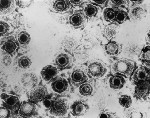
In the lab that I run, we currently work on mutating two different herpesviruses. One of these is Kaposi's Sarcoma Herpesvirus (KSHV) and the other is Murid Herpesvirus 68 (MHV68). Both of these viruses are gammaherpesviruses. In humans, KSHV only really ever becomes a problem in individuals who have a compromised immune system such as those infected with human immunodeficiency virus (HIV). KSHV is an interesting virus because its default program is latency, meaning that once it gets into your cells, it turns itself off and waits for conditions which allow it to grow and take over. This is akin to a bear hibernating in the winter. We do not understand how or w . . . More
Last by Brian Krueger, PhD on Oct 24, 2011, 8:40am
Two of the slides are movies. The first is a clip from "Flock of DoDos" where some lady says scientists are horrible communicators and the other is the AARP shrimp on treadmills commercial.
. . . More
. . . More
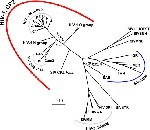
Human immunodeficiency virus (HIV) was first discovered in the 1980’s when gay men and IV drug users started turning up in hospitals with very odd opportunistic infections like Kaposi’s Sarcoma Herpes virus. These individuals had severely compromised immune systems and the original name given to the condition was gay related immunodeficiency disorder (GRID). The discovery of a viral cause of the disease came in 1983 from the labs of Luc Montagnier (recently won the Nobel Prize for this work) and Robert Gallo (recently didn’t win the Nobel Prize and is kind of pissed about it).
Genetic tests have shown that HIV originated in African monkeys and is related to a similar condition in monkeys called Simian Immunodeficiency Virus (SIV). It is thought that the virus was passed on to humans through the consumption of “bush meat” in sub-saharan . . . More

For starters, I really have no idea what it will take to get scientists to be fully engaged with the on-line world. It's hard enough to get them engaged in the real world (I wish that was a joke…). I think for most scientists to get involved with a network, we're going to have to develop something that significantly increases scientific productivity, and I'm not talking just a free reference management site or being able to post lab retreat pictures to a profile. The last 4-5 years have showed us that scientists really are not interested in FaceBooks for science. The marginal success of ResearchGate, NatureNetwork, and LabSpaces can't be cited as triumphs because very little of wh . . . More


. . . More
Last by americanbiotech on Mar 10, 2011, 12:22pm

If money, fame, and science groupies weren't a priority, I'd spend my time and resources trying to find a cure for Cryptocaryon irritans, which is better known in the tropical fish industry as white spot disease, Ich, or Crypto. Crypto is a nasty little bug. It's a protozoan ectoparasite that lodges itself in the epidermis of fish where it grows until it drops off to mature into an Aliens inspired cyst that spits out 300 new little bastard parasites that go on to infect more host fish. In the open ocean, this guy isn't so terrible because its chances of infecting a host are minimal considering the massive amount of water a parasite has to travel through to find a new host. This is a completely different story at an aquaculture facility or in the home aquarium where fish are typically stocked to capacity in relatively small volumes of water. A single cyst can quickly turn into a fish killing epidemic. . . . More
Last by Brian Krueger, PhD on Jun 29, 2010, 8:48am
. . . More

In the fall of 2006, I was finishing up the last few experiments on a project trying to link P53 (a very important protein in cells that helps to prevent cancer) to one of the most important transcriptional activators, P-TEFb. I should probably pause for a second here to give a little bit of background on P-TEFb so that what follows is somewhat understandable. Positive transcription elongation factor b (P-TEFb: Pee Tef bee) is a protein kinase (read as on/off switch) that regulates RNA polymerase II transcription of most genes. RNA polymerase II is the protein responsible for messenger RNA (mRNA) transcription or the process of turning DNA into mRNA. Without mRNA, the transfer form of DNA, proteins cannot be made by the cell, and life does not exist. Essentially, P-TEFb tells RNA polymerase when it’s ok to start making RNA. You can think of P-TEFb as the starter at a track meet, you know, the guy th . . . More
Last by microbiologist xx on Sep 26, 2010, 8:15am
This story begins back when I was finishing up my PhD at Iowa. I had successfully defended my thesis (thank god) and was out on a drinking excursion with "the boys" the weekend before I was moving down to Florida to start my new job. The evening started out just like any other, we pregamed at my buddy's apartment drinking cheap beer, cooking up some quick dinner and bullshitting about how much being a graduate student sucks. You know, the typical poor graduate student routine.
We finally got a cab and made it down to "downtown" which in Iowa City consists of 3 businesses and 75 bars filled with helplessly drunken co-eds. I swear it wasn't more than 15 minutes into the night when my buddy, who shall be referred to as "Dr. Millner" from here on out, started hiccuping. These weren't your normal "Hiccup for 10 minutes and be done with it" type of hiccups, these things were going to last for hours. Of course, being a medical student an . . . More
Last by Thomas Joseph on Jan 04, 2011, 7:47am

. . . More
Last by Brian Krueger, PhD on Jan 20, 2011, 12:17pm
The discussion covered a wide range of topics. One of the first that was brought up was how new media tools might be used to increase collaboration between science and industry. One participant stated that she was surprised by the lack of collaboration between academic and industry scientists in the Research Triangle Park area. She said there really was no resource for expert discovery and thought that the creation of a local database would be helpful in finding connections.
Expanding on this researcher database idea, I asked the audience to talk about their use of currently available social networking tools like LabMeeting, MyNetResearch, BioKM, Mendeley, ResearchGate, etc. One biotech researcher said that his company was open to using these tools privately, and that's really what I have seen and heard of over the years. Companies and institutions want to find bette . . . More
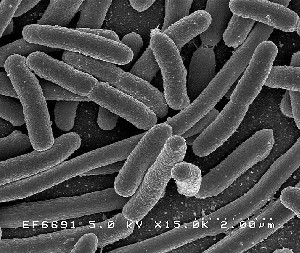
As a microbiologist who has been involved in the testing of antimicrobial products, I’ve been testing disinfectants, hand soaps and hand sanitizers for years and I can tell you that both 99.9% and the resultant 0.1% is nothing more than a statistical anomaly.
When we do testing of these products, together known as antimicrobials, the goal isn’t to determine whether 100% is killed. We want to develop a statistical analysis to show that on a regular basis, the product will kill a certain amount of microbes. We accomplish this by using a certain amount of a particular bacterium, virus or fungi (what we call a challenge) that could never be 100% kil . . . More

Dear Brian, Shanna Hodgson, Lauren Ledesma and CenturyLink,
I cannot thank you enough for your generous donation to my classroom! I can't wait to see the looks on my student's faces when I tell them what is on the way to our classroom! My students will be so excited to use this microscope! You just opened their eyes to science. We can't wait to get these great resources and put them to work in our classroom. Your genorosity means so much to my students and myself! Once again, thank you so much for opening up your hearts to my classroom. Words cannot express how grateful we are!
With gratitude,
Mrs. I
Giving to Donor's Choose is simple and every little bit helps. I ask you to please visit our giving page where we have selected 70 projects to highlight and hopefully get funded by the end of the month. I will be spotlighting my favorites over the coming weeks and working hard to bring science into these children's lives. Please help me by donating and forwarding this link to as many people as you can. It's for science :)
. . . More
 |
 |


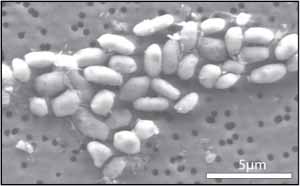

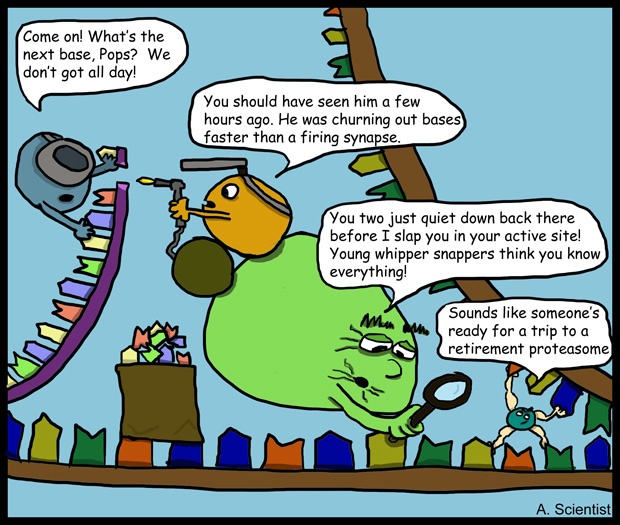 24hrs or less to live. Gotta make the most of it!
24hrs or less to live. Gotta make the most of it!

